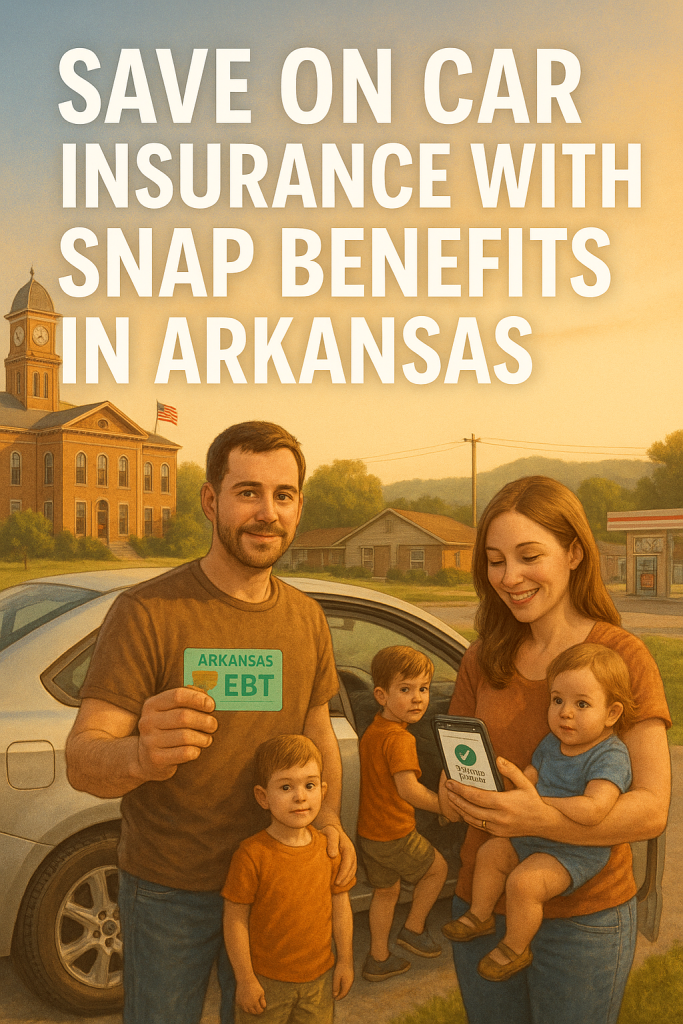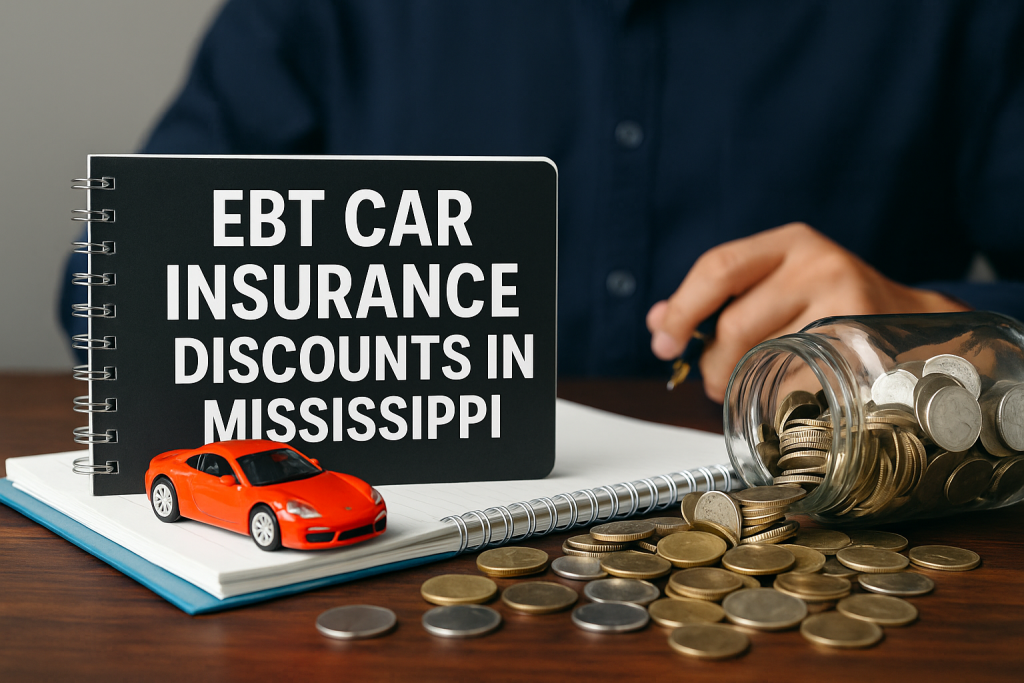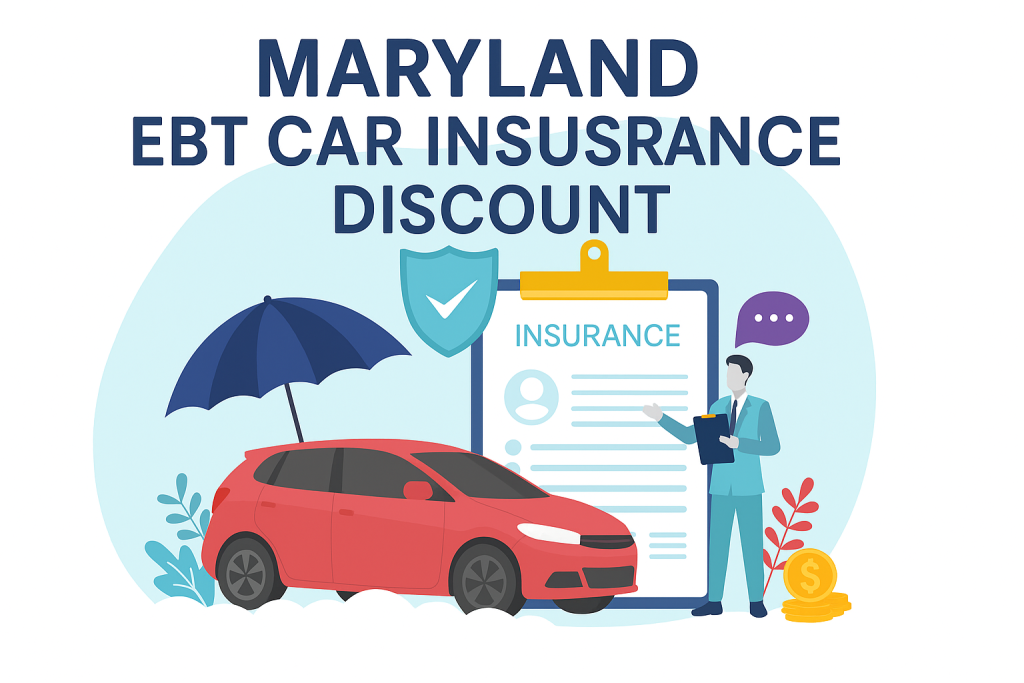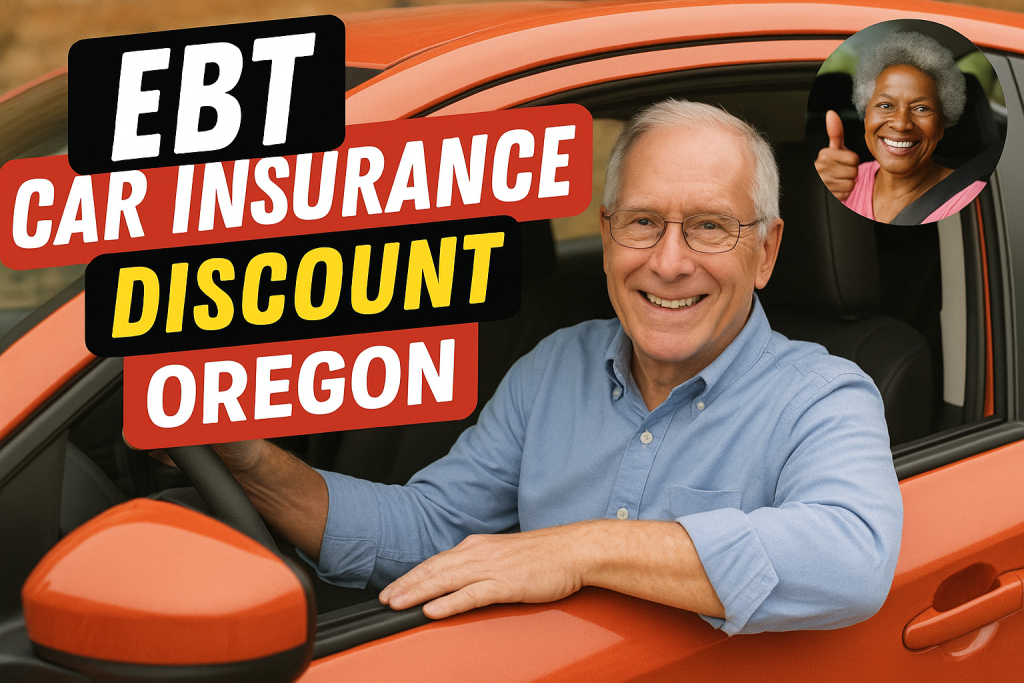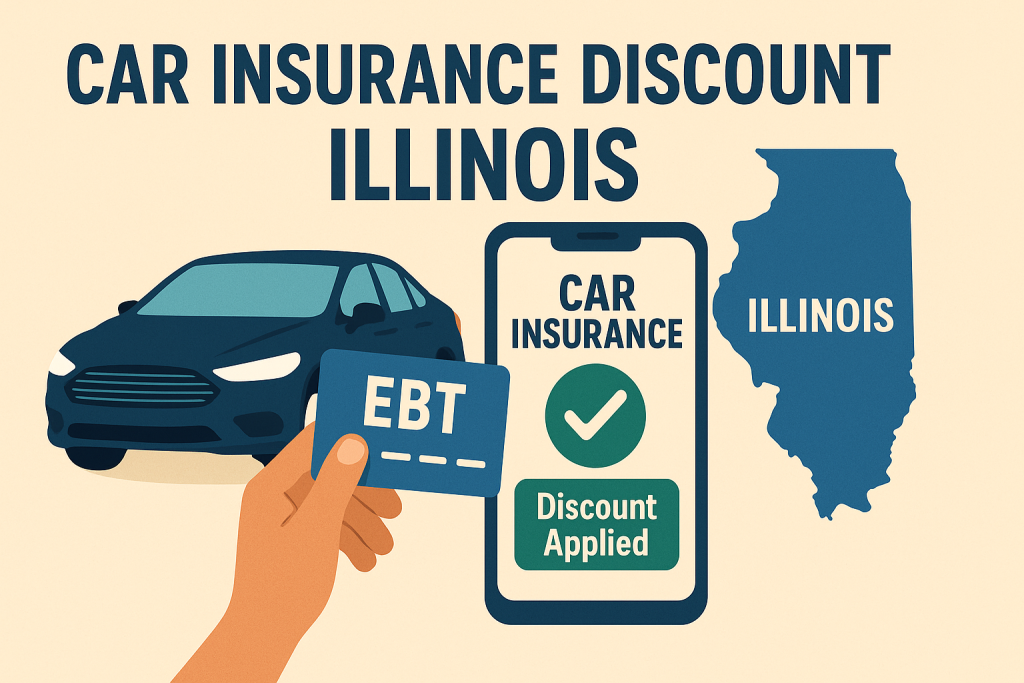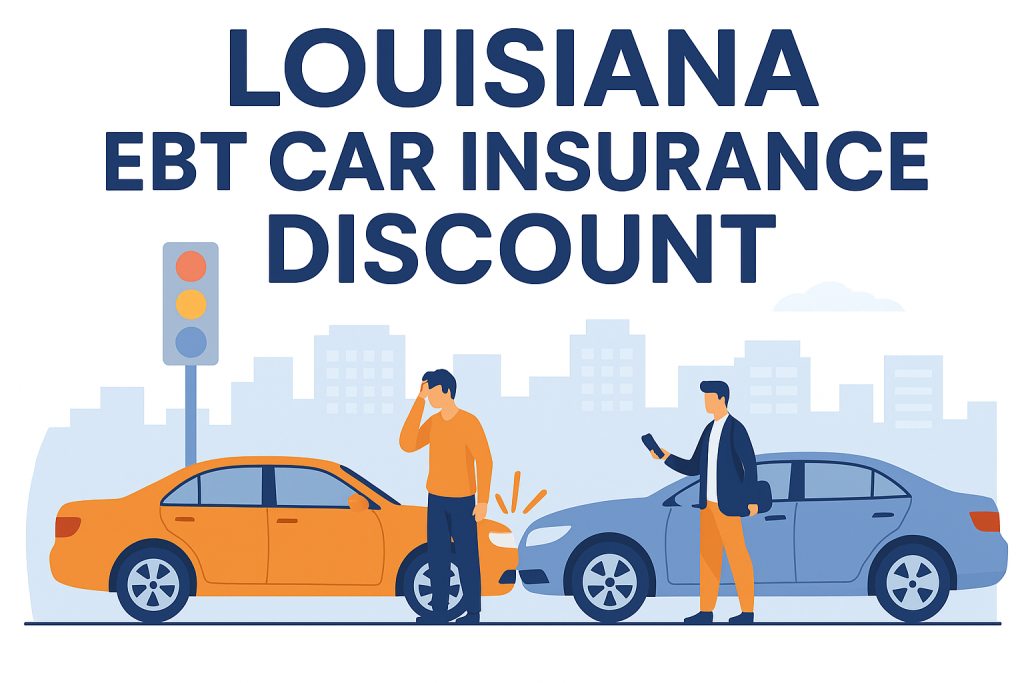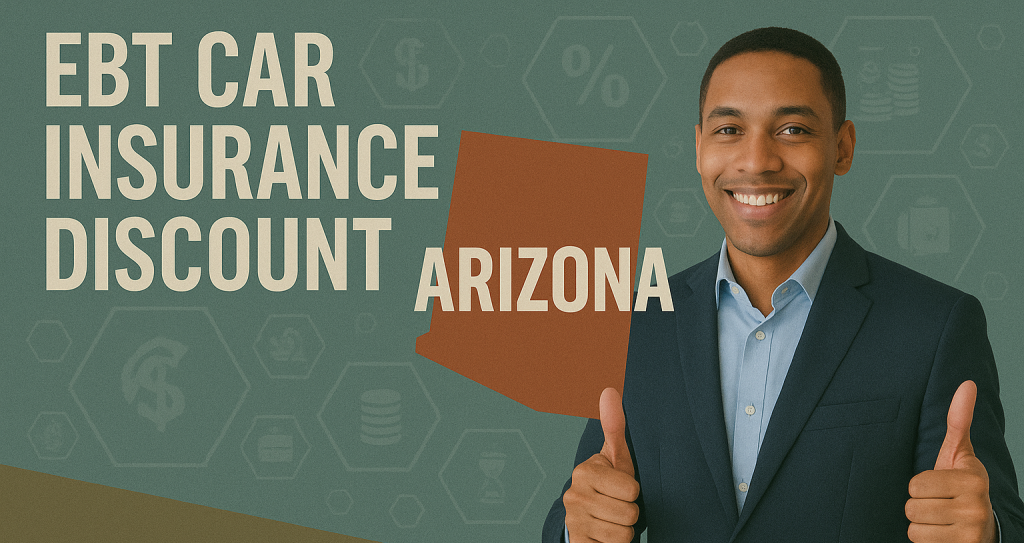For many low-income individuals and families, car insurance is a major expense—one that can be hard to afford while paying for food, rent, and other necessities. Since having car insurance is legally required in most states, finding an affordable option is critical, especially for those on EBT (food stamps) and other government assistance programs.
Thankfully, there are car insurance solutions for every age group—from young adults just starting out to seniors living on fixed incomes. Whether through government programs, low-income discounts, or special insurance plans, people of all ages can save money while staying legally insured.
This guide breaks down how five different age groups use EBT car insurance options to reduce their monthly costs.
How Car Insurance Costs Change by Age
📌 Car insurance rates vary by age, with younger drivers and seniors typically paying the most.
| Age Group | Average Monthly Car Insurance Cost | Why Rates Are High or Low? |
|---|---|---|
| 18-25 (Young Adults) | $150 – $300 | Considered high-risk due to limited driving experience. |
| 26-40 (Working Parents) | $100 – $200 | Rates start to drop with experience and good driving history. |
| 41-55 (Middle-Aged Drivers) | $90 – $180 | Typically lowest rates due to longer driving history. |
| 56-70 (Retirees) | $100 – $180 | Some senior discounts but rates may start increasing. |
| 70+ (Fixed-Income Seniors) | $120 – $250 | Insurers raise rates due to higher accident risk. |
🚗 Example: A 21-year-old on EBT found a state-run low-income insurance program and cut her cost from $220/month to $50/month.
1. Young Adults (18-25): Finding Affordable First-Time Insurance
Many young adults struggle to afford car insurance, especially when starting their first job or attending college. Since insurers classify them as high-risk, their rates are some of the highest on the market.
| Challenges for Young Drivers | EBT Car Insurance Solutions |
|---|---|
| High insurance rates due to inexperience | State-run low-income insurance programs (CA, NJ, etc.) |
| Limited income and high living costs | Pay-per-mile insurance options to lower costs |
| No credit history affecting rates | No-credit-check insurance providers like The General |
🚗 Example: A 20-year-old student on EBT in California signed up for CLCA (California Low-Cost Auto Insurance) and now pays only $40/month instead of $250/month.
2. Working Parents (26-40): Balancing Family Expenses with Car Insurance
Parents often have high monthly expenses like childcare, groceries, and medical bills, making high car insurance rates difficult to manage. Finding a low-cost policy is essential for keeping a tight budget.
| Challenges for Parents | EBT Car Insurance Solutions |
|---|---|
| High expenses from raising kids | Bundling home & auto insurance for multi-policy discounts |
| Driving frequently for work, school, and errands | Usage-based insurance that adjusts for driving habits |
| Need for full coverage due to financing a family vehicle | Government assistance discounts through some insurers |
🚗 Example: A mother of two in Texas switched to Metromile’s pay-per-mile plan and reduced her insurance from $150/month to $85/month since she only drives 6,000 miles per year.
3. Middle-Aged Workers (41-55): Keeping Costs Low Despite Rising Living Expenses
People in this age group typically have the lowest insurance rates, but some struggle with rising costs due to credit issues, location-based risk, or policy renewals.
| Challenges for Middle-Aged Drivers | EBT Car Insurance Solutions |
|---|---|
| Increased rates due to location | Switching to regional or low-income-friendly insurers |
| Credit score affecting insurance cost | No credit check car insurance providers |
| Keeping up with mortgage, car payments, and bills | Defensive driving discounts for savings up to 15% |
🚗 Example: A 45-year-old in New Jersey receiving food assistance switched to The Hartford’s AARP auto plan and saved $25/month by taking a defensive driving course.
4. Seniors (56-70): Managing Auto Insurance on a Fixed Income
Many retirees face rising car insurance costs while living on fixed Social Security or pension incomes. Finding a low-cost plan is crucial to managing expenses.
| Challenges for Seniors | EBT Car Insurance Solutions |
|---|---|
| Insurance rates start to rise again | Senior discounts through GEICO, AARP, and Nationwide |
| Driving fewer miles, but not receiving lower rates | Pay-per-mile or low-mileage insurance options |
| Limited income due to retirement | State-funded low-income auto insurance for qualifying seniors |
🚗 Example: A 65-year-old EBT recipient in Florida switched to Nationwide SmartMiles, lowering her insurance from $120/month to $75/month because she only drives twice a week.
5. Seniors 70+: Staying Insured Without Overpaying
After age 70, insurance companies start raising rates again due to higher accident risk. Many seniors on EBT need low-income auto insurance options to keep coverage affordable.
| Challenges for Seniors 70+ | EBT Car Insurance Solutions |
|---|---|
| Higher rates despite clean records | State-run senior insurance programs (NJ SAIP, CA CLCA) |
| Fixed income making premiums hard to afford | Defensive driving and low-mileage discounts |
| Difficulty finding insurers willing to offer lower rates | Regional insurers that cater to low-income seniors |
🚗 Example: A 72-year-old Social Security recipient in New Jersey switched to the SAIP program and now pays only $365 per year instead of $1,000+ per year.
Final Cost Breakdown: How Different Age Groups Save with EBT Car Insurance
📌 Average savings per age group after switching to a low-cost or EBT-friendly plan:
| Age Group | Average Savings Per Year | How They Saved |
|---|---|---|
| 18-25 (Young Adults) | $1,800+ | State-run low-income car insurance programs |
| 26-40 (Parents) | $600+ | Pay-per-mile insurance for infrequent driving |
| 41-55 (Middle-Aged Drivers) | $500+ | Defensive driving & bundling discounts |
| 56-70 (Retirees) | $600+ | Low-mileage policies & senior discounts |
| 70+ (Fixed-Income Seniors) | $700+ | Special state-run senior insurance programs |
🚗 Bottom Line: No matter your age or situation, if you’re an EBT recipient or on government assistance, you can:
✔️ Check for state-run low-income car insurance programs (CA, NJ, etc.).
✔️ Compare multiple quotes to find hardship-based discounts.
✔️ Ask about senior, defensive driving, or low-mileage discounts.
✔️ Consider pay-per-mile or liability-only insurance for lower costs.
By following these steps, drivers of all ages can stay legally insured while keeping their costs manageable! 🚗💰✅
Car insurance is a necessity for anyone who owns a vehicle, but for people on food stamps, finding affordable coverage can be a daunting task. With limited income, many individuals and families struggle to make ends meet, let alone afford car insurance premiums. However, there are options available for those on food stamps to obtain the coverage they need without breaking the bank.
To shed light on this important topic, I reached out to four professionals in the insurance industry to get their insights on car insurance for people on food stamps. Their expertise and knowledge provided valuable information that can help individuals make informed decisions when it comes to protecting themselves on the road.
One professional in the field emphasized the importance of shopping around for the best rates. They stated, “It’s crucial for individuals on food stamps to compare quotes from multiple insurance providers. By doing so, they can find the most affordable coverage that fits their budget.” This advice highlights the need for consumers to be proactive in their search for car insurance, rather than settling for the first quote they receive.
Another professional stressed the significance of understanding the different types of coverage available. They explained, “People on food stamps should be aware of the various types of car insurance, such as liability, collision, and comprehensive coverage. Each type offers different levels of protection, so it’s important to choose the right coverage for their needs.” By educating themselves on the options available, individuals can make informed decisions that align with their financial situation.
When it comes to concerns related to car insurance for people on food stamps, there are several common questions that arise. Here are 13 common concerns and answers to help address them:
1. Can I afford car insurance on a limited income?
Yes, there are insurance providers that offer discounts and affordable rates for individuals on food stamps.
2. Will my coverage be limited if I’m on food stamps?
Not necessarily. You can still obtain the same level of coverage as any other driver, but it’s important to shop around for the best rates.
3. What happens if I can’t afford my premiums?
Some insurance companies offer flexible payment options or assistance programs for individuals facing financial hardship.
4. Will my food stamps affect my insurance rates?
No, your food stamp status should not impact your insurance rates. Insurers base rates on factors such as driving record and location.
5. Can I get discounts for being on food stamps?
Some insurance providers offer discounts for low-income individuals, so it’s worth asking about potential savings.
6. Will my coverage be different if I’m on food stamps?
Your coverage will be the same as any other driver, regardless of your financial situation.
7. What if I can’t afford the required coverage?
There are state programs and community resources that may be able to help you obtain the necessary coverage.
8. Can I still get full coverage on a limited income?
Yes, you can still purchase full coverage insurance, but it may be more expensive than liability-only coverage.
9. Will my insurance rates go up if I’m on food stamps?
Your insurance rates are primarily based on your driving record and other factors, not your financial status.
10. Can I switch insurance providers if I’m on food stamps?
Yes, you have the option to switch providers if you find a better rate that suits your budget.
11. What if I can’t afford car insurance at all?
It’s important to explore all available options, such as state programs or assistance programs, to ensure you have the coverage you need.
12. Will my coverage be affected if I miss a payment due to financial struggles?
It’s important to communicate with your insurance provider if you’re facing financial difficulties to discuss potential solutions and avoid lapses in coverage.
13. Can I get car insurance for multiple vehicles if I’m on food stamps?
Yes, you can insure multiple vehicles, but the cost will depend on the type of coverage and number of vehicles.
In addition to addressing concerns, it’s important to consider customer feedback when choosing an insurance provider. Here are six customer complaints and six positive reviews for five national insurance carriers in this city and state:
State Farm:
Complaints:
1. “State Farm’s rates are too high compared to other insurers.”
2. “I had a difficult time reaching customer service for assistance.”
3. “My claim was denied without a clear explanation.”
Positive Reviews:
1. “State Farm provided excellent customer service when I was involved in an accident.”
2. “I appreciate the discounts State Farm offers for safe driving habits.”
3. “State Farm’s claims process was quick and efficient.”
Progressive:
Complaints:
1. “Progressive’s rates increased significantly after my first policy term.”
2. “I had trouble adding a new driver to my policy.”
3. “Progressive’s website is difficult to navigate for making changes to my policy.”
Positive Reviews:
1. “Progressive offers competitive rates and discounts for loyal customers.”
2. “I was impressed with Progressive’s claims process after a recent accident.”
3. “Progressive’s customer service representatives were helpful and knowledgeable.”
GEICO:
Complaints:
1. “GEICO’s rates were higher than advertised on their website.”
2. “I experienced delays in processing my claim with GEICO.”
3. “GEICO’s customer service was unhelpful when I had questions about my policy.”
Positive Reviews:
1. “GEICO’s rates were the most affordable option for my budget.”
2. “I received prompt assistance from GEICO’s claims department after an accident.”
3. “GEICO’s website is user-friendly for managing my policy online.”
Allstate:
Complaints:
1. “Allstate’s rates increased unexpectedly after my first policy term.”
2. “I had difficulty resolving a billing issue with Allstate’s customer service.”
3. “Allstate’s coverage options were limited compared to other insurers.”
Positive Reviews:
1. “Allstate provided excellent roadside assistance when my car broke down.”
2. “I appreciated Allstate’s multiple policy discounts for bundling my coverage.”
3. “Allstate’s claims process was straightforward and hassle-free.”
USAA:
Complaints:
1. “USAA’s rates were higher than expected for military members.”
2. “I experienced delays in processing my claim with USAA.”
3. “USAA’s customer service representatives were not as knowledgeable as expected.”
Positive Reviews:
1. “USAA offers exceptional customer service and competitive rates for military members.”
2. “I received personalized attention from USAA’s claims department after an accident.”
3. “USAA’s online tools made it easy to manage my policy and payments.”
When considering car insurance options for people on food stamps, it’s essential to weigh the cost, coverage, and customer feedback of each provider. By exploring different insurance carriers and comparing quotes, individuals can find the best fit for their needs and budget. In summary, car insurance for people on food stamps is a vital aspect of financial protection that should not be overlooked. With the right information and resources, individuals can secure the coverage they need to stay safe on the road. Remember to research and compare quotes from reputable insurance carriers near you to find the best rates and coverage options available.




